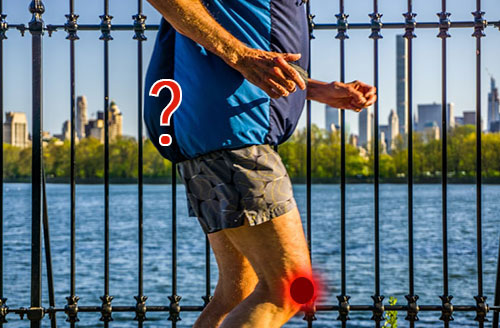Arthritis of the Knee Causing Low Back Pain – The Knee-Spine Syndrome
Many of the people waiting in the outpatient corridor couldn’t stop staring at 68-years-old lady Mrs. Vanaja as she was walking towards our clinic. She was literally walking like a duck, swaying side to side “waddling gait”. During the consultation, her only complaints were back pain and numbness in both feet. Little did she mention her knee pain or walking pattern, and when enquired about the same, she replied with a grim face “that’s there for almost fifteen years and am used to it”. How can a person get used to this kind of severe pain, that too with every step she walks? What made her accept this poor quality of life? Can this be the cause of her back pain?

Osteoarthritis of the knee is very common, and if not intervened earlier, may cause severe instability of the knee joint leading to waddling gait. The principle of energy conservation has formed a cornerstone in many models of human bipedal locomotion, and any deviation from normal walking pattern leads to excessive energy expenditure. So, a person with a waddling gait gets tired sooner. Unknowingly he/she restricts his/her activity level to a bare minimum, which may lead to indirect complications like obesity, hypertension, diabetes mellitus, and even cardiac diseases.
Our spine is designed in such a way to accommodate only the forward swaying movement that happens during regular walking or running. So side swaying waddling gait tends to damage the spinal joints at an accelerated rate. In severe degeneration of the knee, the patients cannot fully straighten their knee (extension), and this is involuntarily compensated by movement in the lower part of the spine. This additional movement also strains the ligaments, muscles, and joints in the lumbar spine. These are the potential reasons for back pain in a person with severe knee pain and termed knee-spine syndrome.
The root cause of the back pain should be addressed; otherwise, the chance of recurrence of the symptoms is higher. X-ray images and MRI of our patient had revealed severe stenosis at her lumbar spine and advanced osteoarthritis with deformity of both knees. If we operate the spine neglecting the knees, she will be walking again in the same abnormal pattern, which can affect other parts of her spine or the operated part itself. Hence it is essential to treat the entire spectrum of this disease. If there is no neurological deficit (i.e.) weakness in legs or urinary incontinence, the knee problem should be addressed first with a total knee replacement. To a certain extent, the spine disorder resolves itself once the patient starts walking normally. In case of significant neurological involvement, spinal surgery to decompress or stabilize the affected segment should be done first, followed by knee surgery.

Dr. P. Keerthivasan
Consultant Orthopaedic Spine Surgeon
Kauvery Hospital, Chennai

